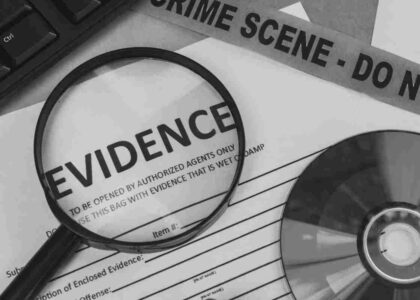In today’s cyber-driven world, digital forensics plays a critical role in solving crimes, investigating security breaches, and protecting sensitive information. Whether you are a cybersecurity enthusiast, an IT professional, or someone looking to enter this fascinating field, understanding the core processes of digital forensics is essential.
In this comprehensive guide, we’ll walk you through the 5 critical steps of digital forensics, offering detailed insights into each phase. By the end of this article, you’ll have a clear understanding of how digital forensic investigations unfold in real-world scenarios.
What is Digital Forensics?
Before diving into the steps, let’s quickly define digital forensics.
Digital forensics is the process of uncovering, preserving, analyzing, and presenting digital evidence in a legally acceptable manner. It is commonly used in criminal investigations, corporate security audits, data breach investigations, and civil litigation cases.
The field of digital forensics encompasses a wide range of devices and media types including computers, mobile devices, cloud storage, emails, and network traffic.
The 5 Key Steps of Digital Forensics
The digital forensic process typically follows a structured methodology, often broken down into five primary steps:
- Identification
- Preservation
- Collection
- Analysis
- Presentation
Let’s explore each step in detail.
1. Identification
Identification is the first and one of the most crucial stages of a digital forensic investigation. During this phase, investigators determine:
- What data is relevant
- Where the data is located
- What devices might hold important information
Key Tasks in the Identification Phase:
- Understand the incident or case specifics.
- Identify the devices involved (computers, servers, mobile phones, IoT devices).
- Recognize potential sources of digital evidence (emails, logs, metadata, etc.).
- Evaluate the risks associated with data loss or tampering.
Tip: Proper documentation during this stage is vital. Creating a list of all potential evidence sources helps prevent critical evidence from being overlooked.
Real-World Example: Imagine a case involving financial fraud. The forensic team must first identify the company laptops, mobile devices, and cloud accounts the suspect used to siphon funds.
2. Preservation
Once potential sources are identified, the next step is preservation. The primary goal during this phase is to safeguard the evidence to prevent tampering, alteration, or loss.
Key Preservation Techniques:
- Imaging: Creating a bit-by-bit copy of storage devices.
- Hashing: Calculating hash values (e.g., MD5, SHA-256) to ensure data integrity.
- Chain of Custody: Maintaining a detailed record of who has accessed or handled the evidence.
Best Practices for Preservation:
- Power off devices properly to prevent volatile data loss.
- Use write blockers when copying data to avoid accidental modifications.
- Store forensic copies in secure, access-controlled environments.
Real-World Example: Suppose an employee is suspected of stealing intellectual property. The forensic team creates forensic images of the employee’s laptop and emails before allowing any internal IT team to access the device.
3. Collection
In the collection phase, forensic experts gather the identified and preserved evidence using court-admissible methods.
Key Collection Activities:
- Forensically imaging hard drives.
- Extracting data from cloud services.
- Capturing volatile memory (RAM) for live system analysis.
- Collecting metadata, timestamps, and system logs.
Important: Evidence must be collected in a legally defensible manner, ensuring that it maintains integrity throughout the process.
Challenges in the Collection Phase:
- Large volumes of data.
- Encrypted or password-protected devices.
- Distributed evidence across multiple locations.
Real-World Example: In a hacking investigation, forensic specialists might need to collect server logs, firewall records, and employee workstation data spread across multiple geographies.
4. Analysis
The analysis phase is often the most time-consuming and intellectually demanding step in the digital forensics process. Here, investigators examine the collected evidence to extract meaningful insights.
Key Analysis Activities:
- Searching for hidden, deleted, or encrypted files.
- Reconstructing user activities (e.g., browser history, login times).
- Identifying evidence of malicious behavior (e.g., malware installation, unauthorized data access).
- Timeline creation to establish sequence of events.
Forensic Tools Commonly Used:
- EnCase
- FTK (Forensic Toolkit)
- Autopsy
- Volatility (for memory analysis)
- X-Ways Forensics
Important Considerations:
- Correlate findings with case details.
- Maintain objectivity; don’t jump to conclusions.
- Validate findings using multiple tools or techniques.
Real-World Example: In an insider threat investigation, forensic analysis might reveal that a departing employee downloaded sensitive files onto a USB drive days before resigning.
5. Presentation
The final step, presentation, involves summarizing the findings and presenting them in a clear, concise, and legally acceptable format.
Key Aspects of Presentation:
- Create detailed forensic reports.
- Include screenshots, file hashes, timelines, and logs as evidence.
- Prepare expert witness testimony if required.
- Ensure that findings are understandable to non-technical stakeholders (lawyers, judges, juries).
How to Create Effective Forensic Reports:
- Structure reports clearly (Executive Summary, Methodology, Findings, Conclusions).
- Avoid technical jargon where possible.
- Be precise and factual.
Real-World Example: In a corporate espionage case, a forensic expert may testify in court, presenting evidence that an ex-employee emailed confidential files to a competitor before quitting.
Why Following These 5 Steps is Critical
Adhering strictly to these five steps ensures:
- Evidence Admissibility: Only properly collected and handled evidence can stand up in court.
- Data Integrity: Prevents claims of evidence tampering.
- Investigation Credibility: Builds trust in the findings among stakeholders.
- Effective Resolution: Helps organizations respond to security incidents swiftly and legally.
Failure to follow proper forensic procedures can lead to evidence being thrown out, potentially costing companies millions in damages or letting criminals go free.
FAQs about Digital Forensics
Q1: Can digital forensics recover deleted files?
Yes, skilled forensic investigators can often recover deleted files using specialized tools unless the data has been securely wiped or overwritten.
Q2: Is digital forensics only used in criminal cases?
No, digital forensics is also heavily used in civil litigation, internal corporate investigations, regulatory compliance audits, and more.
Q3: How long does a digital forensic investigation take?
It varies depending on the complexity and volume of the data. Simple cases might take days, while complicated cases can last months.
Q4: What qualifications do digital forensic experts need?
Typically, a degree in computer science, cybersecurity, or a related field, along with certifications like GCFA, CHFI, or EnCE.
Conclusion
Digital forensics is a powerful discipline at the intersection of technology and law. By meticulously following the five steps of Identification, Preservation, Collection, Analysis, and Presentation, investigators can uncover critical evidence, solve complex cases, and help deliver justice.
Whether you’re planning to build a career in digital forensics or simply want to understand how investigations are conducted, mastering these steps is fundamental.
Stay curious, stay ethical, and keep learning — the digital world needs sharp minds like yours to keep it secure!






